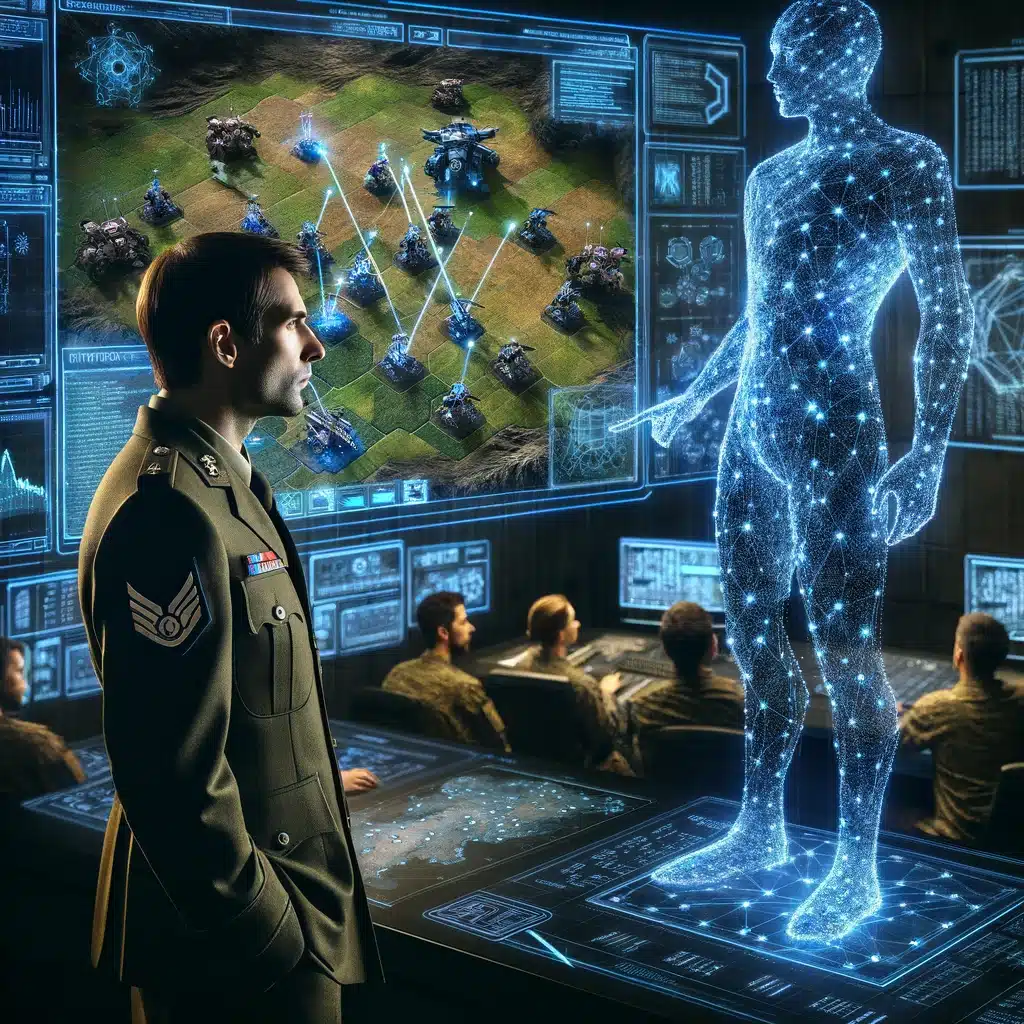The boundary between science fiction and military strategy is becoming increasingly porous, thanks to advancements in artificial intelligence (AI). The US Army Research Laboratory’s recent experiment, employing OpenAI’s technology in a simulated military video game environment, is a testament to this evolving landscape. While the idea of using AI to enhance battle planning is not new, the application of large language models and generative AI technologies in a war game simulation presents a novel approach to strategizing and decision-making in military contexts.
The Experiment Unpacked – Exploring AI in Warfare: The US Army’s Experiment with OpenAI in Military Strategy Games
At the core of this experiment was Starcraft II, a military science fiction video game that provided the virtual battlefield for AI chatbots to demonstrate their strategic prowess. The US Army researchers focused on a relatively simple scenario: a small number of military units, complete knowledge of the battlefield, and a clear objective to eliminate enemy forces and seize control of a specific point.
Utilizing OpenAI’s GPT-4 Turbo and GPT-4 Vision models, alongside two AI agents built on older technology, the researchers embarked on a mission to explore the feasibility of AI acting as a military commander’s assistant. These AI chatbots were provided with details about the battlefield terrain, friendly and enemy forces, and military tactics concerning attacking and defending.
The results were intriguing. The AI assistants, especially those based on OpenAI’s GPT models, quickly proposed several courses of action. These suggestions allowed the human ‘commanders’ to refine the AI’s proposals, demonstrating a collaborative approach to strategizing. Despite the AI models suffering more casualties than their older counterparts, their ability to accomplish mission objectives highlighted the potential benefits of integrating AI into military planning processes.
Ethical and Practical Considerations – Exploring AI in Warfare: The US Army’s Experiment with OpenAI in Military Strategy Games
The leap from a video game simulation to real-world application is vast, fraught with ethical, legal, and practical challenges. Josh Wallin of the Center for a New American Security emphasizes the complexity of translating AI assistance from simplified simulations to the unpredictable nature of real-world conflicts. The idea of relying on AI for strategic military planning raises significant concerns, particularly regarding the feasibility and ethical implications of such applications.
The US Army Research Laboratory’s cautious approach, refraining from commenting on the study, reflects the sensitivity surrounding the use of AI in military contexts. OpenAI’s updated usage policies, which permit some military applications while prohibiting those involving weapons development or the potential for harm, underscore the ongoing debate about the role of AI in warfare and its broader societal impacts.
Automation Bias and Trust in AI – Exploring AI in Warfare: The US Army’s Experiment with OpenAI in Military Strategy Games
The experiment also brings to light the issue of automation bias—the tendency to trust automated systems, possibly at the expense of ignoring contradictory evidence. Carol Smith, from the Software Engineering Institute, warns of the dangers of overreliance on AI advice in high-stakes situations. This highlights a critical challenge: ensuring that human judgment remains paramount in military decision-making processes, especially when AI systems offer strategic recommendations.
The Future of AI in Military Strategy – Exploring AI in Warfare: The US Army’s Experiment with OpenAI in Military Strategy Games
As AI continues to evolve, its potential applications in military strategy and beyond will likely grow. The Department of Defense’s AI task force has identified numerous military use cases for generative AI, indicating a strong interest in exploring this technology further. However, experts like Lauren Kahn at the Center for Security and Emerging Technology caution against premature deployment of AI in sensitive or high-stakes domains, pointing to the technology’s current limitations and the need for careful consideration of ethical implications.
Conclusion: Navigating the AI Battlefield – Exploring AI in Warfare: The US Army’s Experiment with OpenAI in Military Strategy Games
The US Army Research Laboratory’s exploration of AI in military video game simulations opens a window into the future of warfare, where AI could play a significant role in strategizing and decision-making. However, the journey from virtual simulations to real-world applications is fraught with challenges. Balancing the strategic advantages of AI with ethical considerations, ensuring human oversight, and mitigating the risks of automation bias are critical steps in navigating this new frontier.
As AI technologies continue to advance, the dialogue between technological innovation and ethical responsibility must intensify. The potential of AI to revolutionize military strategy—and, by extension, society—is immense. Yet, as we stand on the precipice of this new era, the responsibility to wield this power wisely has never been more critical.

